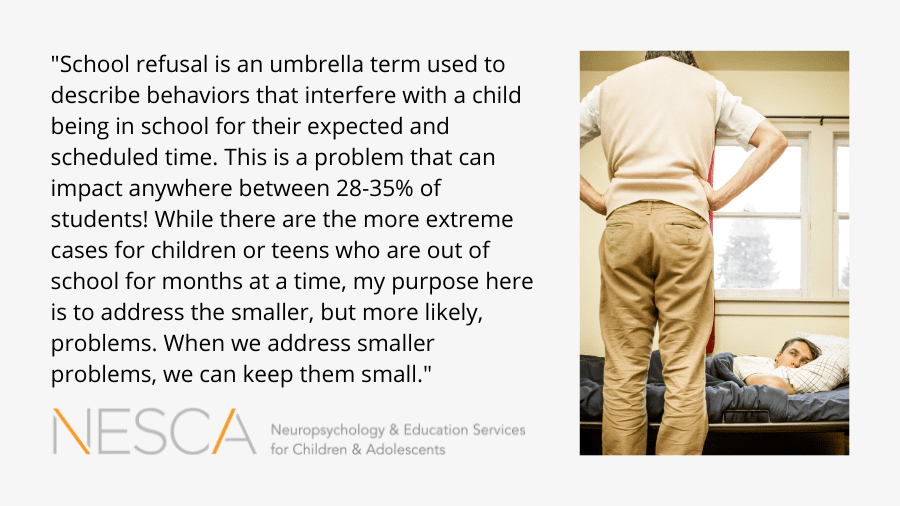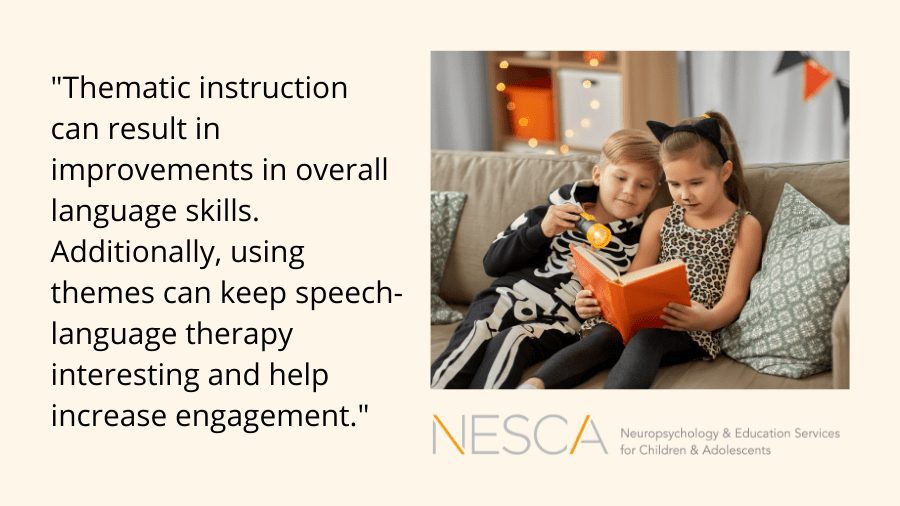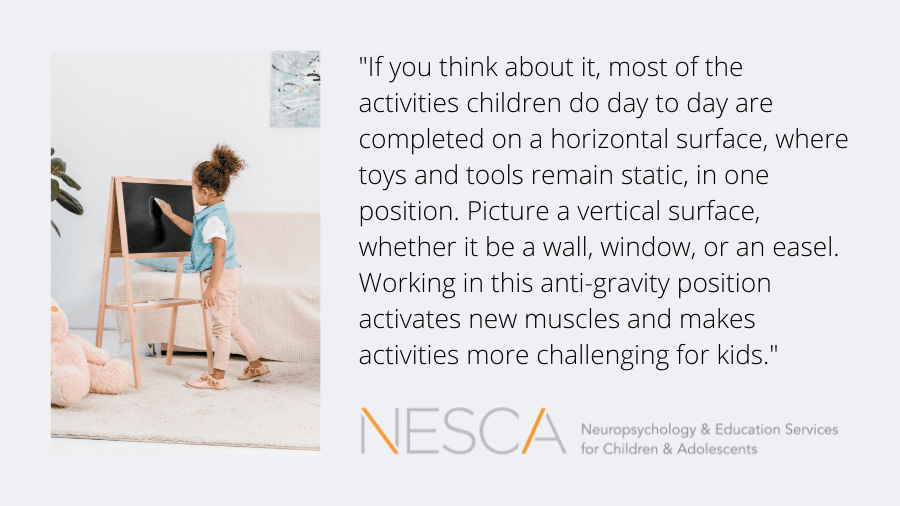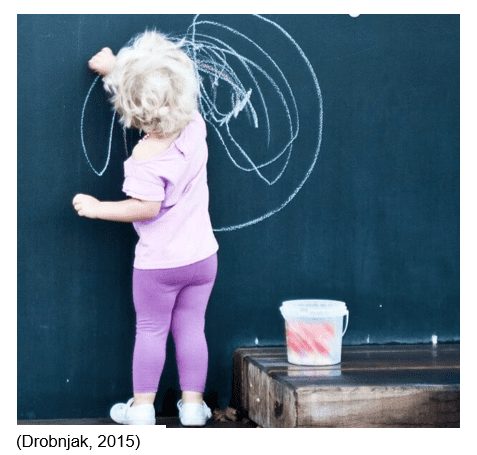
By: Jane Hauser
Director of Marketing & Outreach
This September, NESCA welcomed a new neuropsychologist to its team. Learn more about Pediatric & Adult Neuropsychologist Miranda Milana, Psy.D., in my interview with her below.
Where did your interest in neuropsychology come from?
I knew from an early age that I wanted to work with children. I initially thought I would work with children in the medical field, but I ended up being fascinated by child psychology, which led to my focus on the clinical aspect of therapy with kids and their families.
I then started to notice the importance of neuropsychological reports in schools, treatment planning, formulating diagnoses and determining the tools needed to help kids be successful. I knew I wanted to do that! I saw my fair share of unhelpful reports and wanted to take the opportunity to write truly beneficial ones.
Over time, I’ve gotten to work with families and have been able to offer evaluations to the adults as well as young adults.
Who do you evaluate??
I really enjoy working with all kids, but have a particular intertest in early elementary-aged kids – toddlers through early elementary schoolers. I love to get to know kids whose parents, caregivers or educators are questioning whether they may have an autism spectrum disorder (ASD) or some kind of learning challenge. It’s exciting to start to work with a child as they are entering school and continue to watch them progress throughout their education.
Additionally, I have a particular interest in working with older adolescents and adults who feel there may be a “missing piece” in their understanding of themselves, or who seek greater insight into their personal profile to inform appropriate therapies, access relevant services, and enhance self-awareness.
Tell me about your clinical experience prior to joining NESCA.
Before coming to NESCA, I was a post-doctoral fellow at Boston Children’s Hospital, which provided me with great exposure to a wide variety of kids and the challenges they were experiencing. My case load there exposed me to a vast range of educational and developmental concerns and presentations. Working with children aged 2 through 17 who showed a wide-ranging array of presentations really helped me to become a flexible thinker.
It was a great opportunity to work with all types of clinicians, families and children. Also, having such a diverse case load afforded me the opportunity to become part of so many teams within the hospital, including the Down Syndrome, Adoption and Teenager teams, among others. It was rewarding to be able to learn from each one of them.
What drew you to NESCA?
I wanted to continue to work in a collaborative environment, where it wasn’t just me contributing to a child’s evaluation and plan. I really wanted to learn and collaborate with a team of psychologists and other providers in a group practice, outside of the hospital setting. Being part of a child’s trajectory in school is exciting, and NESCA allows me to do just that!
Joining NESCA also allows me to work with a more diverse group of individuals based on age. While I love working with children and adolescents, I also welcome the opportunity to work with more adults, parents, or young adults who are trying to secure adult services and supports.
What are some of the more rewarding experiences you’ve had as a neuropsychologist?
Getting kids who are closed off to share their experiences with me is very rewarding. With these kids, we have to be creative in how we approach them, get them to share and play. Having anxious, resistant children feel comfortable opening up to me in conversation or who allow themselves to be vulnerable by sharing personal information, is such a rewarding part of what I do. To know you have built that kind of trust with a child is so fulfilling.
Working with adults has also been rewarding, as it allows me to provide meaningful insights and answers to individuals who have often spent years seeking clarity without success.
What’s your secret sauce in building that trust with a child who is anxious or resistant?
I am kind of a kid at heart, so I use that in testing children to engage them and create a more fun environment. I take pride in getting to know a child beyond the test scores and collected data. Finding common ground and relating to them is so important. I also like to make sure they know I am part of their team who will support them as they move forward in school and in life. It’s a personal challenge to me to get the most resistant kids to engage and maybe even crack a smile during the evaluation!
About Miranda Milana, Psy.D.
Dr. Miranda Milana provides comprehensive evaluation services for children, adolescents, and adults with a wide range of concerns, including attention deficit disorders, communication disorders, intellectual disabilities, and learning disabilities. She particularly enjoys working with children and their families who have concerns regarding an autism spectrum disorder. Dr. Milana has received specialized training on the administration of the Autism Diagnostic Observation Schedule (ADOS).
attention deficit disorders, communication disorders, intellectual disabilities, and learning disabilities. She particularly enjoys working with children and their families who have concerns regarding an autism spectrum disorder. Dr. Milana has received specialized training on the administration of the Autism Diagnostic Observation Schedule (ADOS).
Dr. Milana places great emphasis on adapting her approach to a individual’s developmental level and providing a testing environment that is approachable and comfortable for them. She also values collaboration with families and outside providers to facilitate supports and services that are tailored to a person’s specific needs.
Before joining NESCA, Dr. Milana completed a two-year postdoctoral fellowship at Boston Children’s Hospital in the Developmental Medicine department, where she received extensive training in the administration of psychological and neuropsychological testing. She has also received assessment training from Beacon Assessment Center and The Brenner Center. Dr. Milana graduated with her B.A. from the University of New England and went on to receive her doctorate from William James College (WJC). She was a part of the Children and Families of Adversity and Resilience (CFAR) program while at WJC. Her doctoral training also included therapeutic services across a variety of settings, including an elementary school, the Family Health Center of Worcester and at Roger Williams University.
Dr. Milana grew up in Maine and enjoys trips back home to see her family throughout the year. She currently resides in Wrentham, Massachusetts, with her husband and two golden retrievers. She also enjoys spending time with family and friends, reading, and cheering on the Patriots, Bruins, Red Sox, and Celtics.
To book an evaluation with Pediatric Neuropsychologist Dr. Milana or one of our many other expert neuropsychologists or therapists, complete NESCA’s online intake form.
Neuropsychology & Education Services for Children & Adolescents (NESCA) is a pediatric neuropsychology practice and integrative treatment center with offices in Newton and Plainville, Massachusetts, as well as Londonderry, New Hampshire. NESCA serves clients from preschool through young adulthood and their families. For more information, please email info@nesca-newton.com or call 617-658-9800.

 By: Erin Gibbons, Ph.D.
By: Erin Gibbons, Ph.D. Erin Gibbons, Ph.D. is a pediatric neuropsychologist with expertise in neurodevelopmental and neuropsychological assessment of infants,
Erin Gibbons, Ph.D. is a pediatric neuropsychologist with expertise in neurodevelopmental and neuropsychological assessment of infants,


 include roasting pumpkin seeds, setting out the candy bowl for trick-or-treaters, doing Halloween-themed crafts, etc. It is important for you to pick activities that best fit your child’s sensory needs. For example, if your child dislikes carving pumpkins because they have to touch the messy pumpkin insides, consider having your child paint their pumpkin or decorate it with stickers instead or make a pumpkin out of paper to decorate. If you and your child really want to go trick-or-treating but your child becomes overwhelmed with noisy crowds, consider trick-or-treating on only quiet side streets, or limit your time, allowing for breaks in between. If your child becomes overwhelmed with flashing lights, loud noises, or scary decorations, consider doing a drive-by of the neighborhood before taking your child out for trick-or-treating so you know which houses to avoid. For some children who crave a great deal of movement, it may be useful to engage in some heavy work activity before participating in a Halloween activity: wall push-ups, yoga poses, carrying weighty objects, for example. It may also be useful to engage in calming sensory activity to ease the transition from a busy setting back into the house: tactile materials like playdough or putty, water play, or a sensory table may be worth trying, or consider making a play tent or fort with quiet books or puzzles, or drawing to smooth the transition.
include roasting pumpkin seeds, setting out the candy bowl for trick-or-treaters, doing Halloween-themed crafts, etc. It is important for you to pick activities that best fit your child’s sensory needs. For example, if your child dislikes carving pumpkins because they have to touch the messy pumpkin insides, consider having your child paint their pumpkin or decorate it with stickers instead or make a pumpkin out of paper to decorate. If you and your child really want to go trick-or-treating but your child becomes overwhelmed with noisy crowds, consider trick-or-treating on only quiet side streets, or limit your time, allowing for breaks in between. If your child becomes overwhelmed with flashing lights, loud noises, or scary decorations, consider doing a drive-by of the neighborhood before taking your child out for trick-or-treating so you know which houses to avoid. For some children who crave a great deal of movement, it may be useful to engage in some heavy work activity before participating in a Halloween activity: wall push-ups, yoga poses, carrying weighty objects, for example. It may also be useful to engage in calming sensory activity to ease the transition from a busy setting back into the house: tactile materials like playdough or putty, water play, or a sensory table may be worth trying, or consider making a play tent or fort with quiet books or puzzles, or drawing to smooth the transition.

 unique pattern of strengths and weaknesses to best formulate a plan for intervention and success. With experiences providing therapy and assessments, Dr. Creedon bridges the gap between testing data and therapeutic services to develop a clear roadmap for change and deeper of understanding of individual needs.
unique pattern of strengths and weaknesses to best formulate a plan for intervention and success. With experiences providing therapy and assessments, Dr. Creedon bridges the gap between testing data and therapeutic services to develop a clear roadmap for change and deeper of understanding of individual needs.



 What are the benefits of working on a vertical surface?
What are the benefits of working on a vertical surface?
 pediatric settings. Maddie received her undergraduate degree in Exercise Science/Kinesiology at The College of Charleston in South Carolina and earned her Doctorate degree in Occupational Therapy from The MGH Institute of Health Professions in Boston.
pediatric settings. Maddie received her undergraduate degree in Exercise Science/Kinesiology at The College of Charleston in South Carolina and earned her Doctorate degree in Occupational Therapy from The MGH Institute of Health Professions in Boston.
 attention deficit disorders, communication disorders, intellectual disabilities, and learning disabilities. She particularly enjoys working with children and their families who have concerns regarding an autism spectrum disorder. Dr. Milana has received specialized training on the administration of the Autism Diagnostic Observation Schedule (ADOS).
attention deficit disorders, communication disorders, intellectual disabilities, and learning disabilities. She particularly enjoys working with children and their families who have concerns regarding an autism spectrum disorder. Dr. Milana has received specialized training on the administration of the Autism Diagnostic Observation Schedule (ADOS).
 complex, inter-related needs, with a particular emphasis on identifying co-occurring neurodevelopmental and psychiatric challenges. She specializes in the evaluation of developmental disabilities including autism spectrum disorder and social-emotional difficulties stemming from mood, anxiety, attachment and trauma-related diagnoses. She often assesses children who have “unique learning styles” that can underlie deficits in problem-solving, emotion regulation, social skills and self-esteem.
complex, inter-related needs, with a particular emphasis on identifying co-occurring neurodevelopmental and psychiatric challenges. She specializes in the evaluation of developmental disabilities including autism spectrum disorder and social-emotional difficulties stemming from mood, anxiety, attachment and trauma-related diagnoses. She often assesses children who have “unique learning styles” that can underlie deficits in problem-solving, emotion regulation, social skills and self-esteem.

 Ann-Sofie Selin (2003)
Ann-Sofie Selin (2003)


 delays, learning disabilities, attention difficulties and executive functioning challenges. She often works with children whose complex profiles are not easily captured by a single label or diagnosis. She particularly enjoys working with young children and helping parents through their “first touch” with mental health care or developmental concerns.
delays, learning disabilities, attention difficulties and executive functioning challenges. She often works with children whose complex profiles are not easily captured by a single label or diagnosis. She particularly enjoys working with young children and helping parents through their “first touch” with mental health care or developmental concerns.

Connect with Us